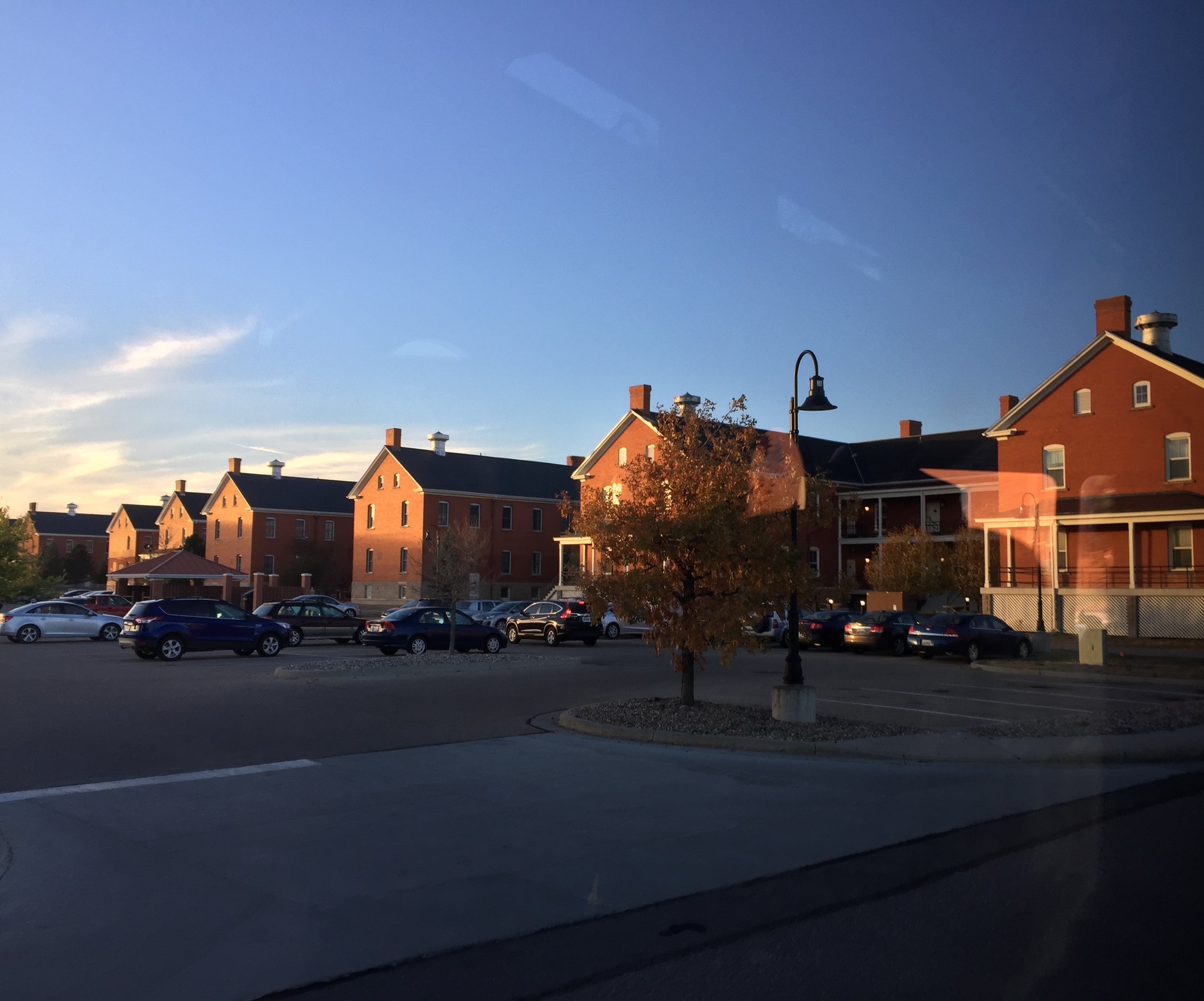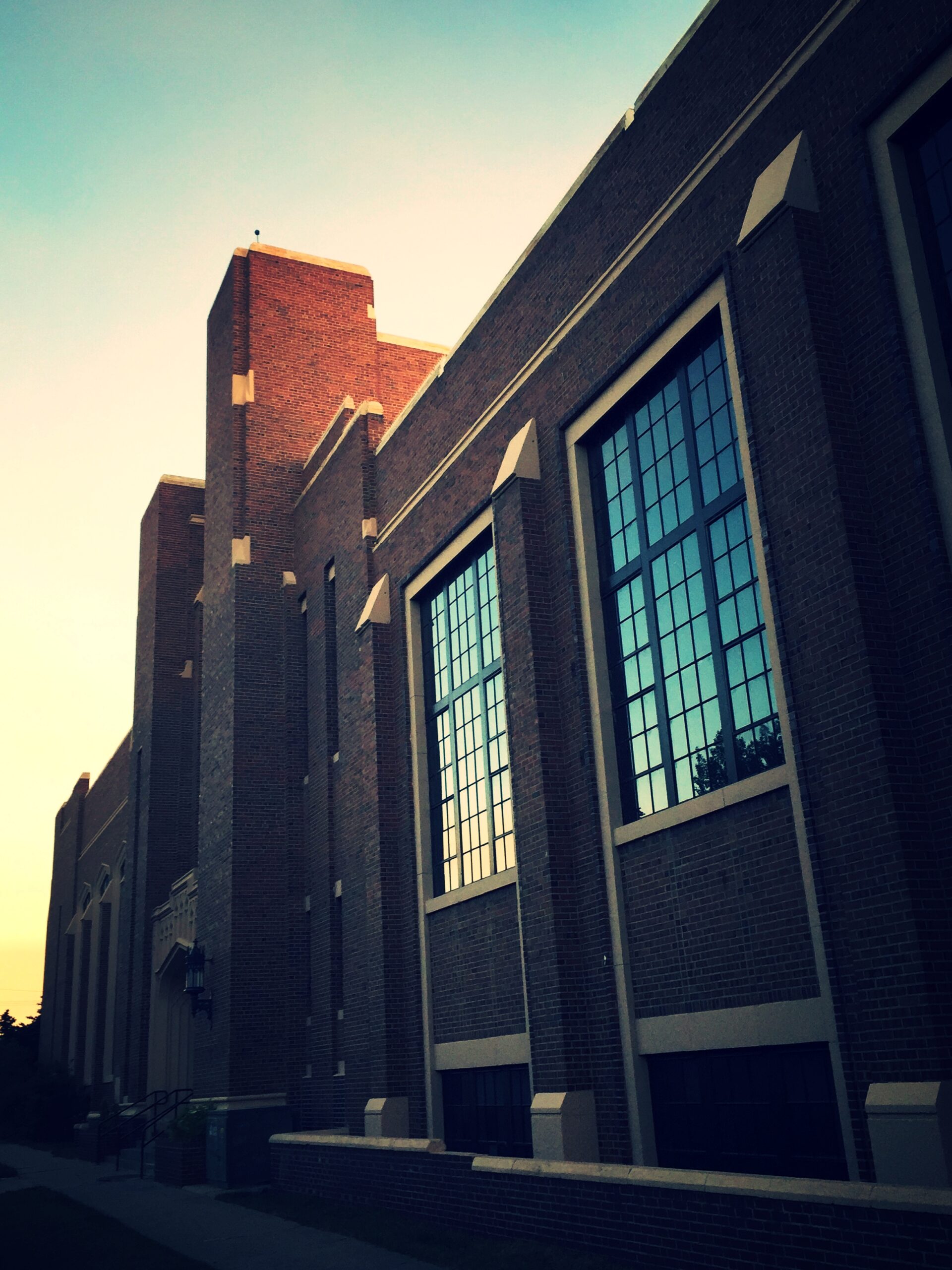Old Bedlam was built in 1849, making it the oldest standing military building in Wyoming. Fort Laramie was established when the military came to the state to protect emigrants traveling on the Mormon, Oregon, and the Overland trail.


Old Bedlam was built in 1849, making it the oldest standing military building in Wyoming. Fort Laramie was established when the military came to the state to protect emigrants traveling on the Mormon, Oregon, and the Overland trail.

The Wyoming National Bank in downtown Casper celebrated its 50th anniversary in 1964 with a modern building complex unlike any in Wyoming. The bank was designed by Denver architect Charles Deaton, who also designed the so-called “Jetson House” west of Denver, which was featured in Woody Allen’s 1973 movie Sleeper.

Castle Gardens gets its name from the outcropping of sandstone that the wind has eroded into fanciful shapes resembling the turrets and towers of castles. This unusual formation has been luring visitors for thousands of years, and many of them left their mark in the soft sandstone.
The first owner of the building was Charles Henry King, one of the earliest settlers to arrive in the area. He arrived in Shoshoni from Omaha in 1905. Upon arrival King bought three lots that would become in the following year the first lumber company in town. During this period, the lumber company’s main business came from homesteaders who had headed out west to claim the land that was promised by the Homestead Act.

“Wyoming’s sense of preservation is unmatched. Without this Trail, we would find life today far different. I cannot convey how strongly I feel when I see the Trail in Wyoming. And not just that Trail, but the assorted stage routes and the Overland Trail, an Indian trail across Weston County, the Lander Road, etc.” – Cori Clements, Wyoming resident who hiked the Oregon Trail all the way across the state over 10 years. Read her inspiring story here!

The AMK Ranch represents two important phases of settlement in the Jackson Hole valley: homesteading and vacation homes. The property demonstrates a cultural shift from using the land for basic daily needs and economic sufficiency to a more dominant appreciation of land as scenery and a place for recreation.

On the western edge of the University of Wyoming campus stands a largely forgotten monument to a former Cowboy. The Lowell O’Bryan monument is an unassuming stone drinking fountain located directly west of Old Main. It bears a plaque that reads “He gave himself to insure the safety of others.”

The first library in Cheyenne was located in Central School in a relatively small room. As the town grew and its needs multiplied, a committee to build a new library was established in 1900, and two years later, Cheyenne had a Carnegie Library.

The $64,000 monument project was designed by Henry Hobson Richardson and was completed in 1882. It features two bas-relief sculptures of the Ames brothers, Oakes on the east side and Oliver on the west

Hynds Lodge, built by Cheyenne businessman Harry P. Hynds in 1922 for $25,000, was constructed as a lodge at the recreation camp for the Boy Scouts of America. Hynds came to Cheyenne in 1882 and worked as a blacksmith for the Cheyenne-Deadwood Stage Line before acquiring several gambling saloons and making a fortune.

Chinese workers who lived in Chinatown in Rock Springs were attacked in 1885 and the neighborhood was destroyed. Unlike the buildings, the history and stories of their community was not lost.

Mt. Sinai synagogue has provided a space for the Jewish community since 1915, when the original cornerstone was laid on Pioneer avenue and 20th Street.

The First Scandinavian Evangelical Lutheran Church on August 13th, 1884, conducting services in Scandinavian languages. Newly arriving immigrants who were experiencing the same cultural changes were able to support each other in the shared space of the church.

Susan Wissler was born in Broadhead, Minnesota in 1853 and would become the first female mayor in Wyoming.

On July 4, 1867, the Union Pacific railroad established its headquarters in the area that would later become Cheyenne. The U.S. Cavalry followed them weeks later to establish Fort D.A. Russell. There wouldn’t be a high concentration of Buffalo Soldiers on the base until 1902 after the Philippine Insurrection.

The school was originally built in 1922 as North Casper School. Thanks to the Casper Housing Authority and the VA, the old Roosevelt High School will continue to be a neighborhood center for another hundred years.

The Casper Artists’ Guild’s renovation of the former Pacific Produce building for their new location is a great example of how abandoned historic buildings can transition from a public burden to local gem and destination place with strong community support.

The Laramie Plains Civic Center is a terrific example of how former school buildings can be adaptively reused for the greater good of a community. Laramie will have to face this issue once more as the high school built in 1960 is now empty after the city built a brand new high school that opened in 2016.

In 1911, Park County split from Big Horn County, and in 1914 the Park County commissioners appointed a board for a public library system. The city council immediately applied again for a Carnegie Public Library Building grant.

Officially closed on February 1, 1946, the Douglas, Wyoming prisoner of war camp that housed Italian and German P.O.W.’s during WWII represents an interesting chapter in the history of our state.

Within the city of Rock Springs stands the grandiose Saints Cyril and Methodius Catholic Church that was officially listed on the National Register of Historic Places on December 22nd, 2015. With its Romanesque architecture and a 125-feet bell tower, the Church looms over the southwestern Wyoming town.